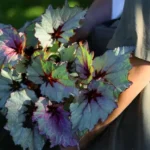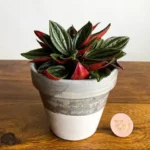The Magic of Moss Poles: How They Support Climbing Plants
Climbing plants are some of the most striking and satisfying houseplants to grow. They start small, twining and trailing, and before you know it, they’re climbing toward the sunlight in search of space to grow. But without proper support, those beautiful vines can become tangled or droopy. That’s where moss poles come in. These vertical supports provide structure, moisture, and a natural feel that many tropical climbers love. In this article, we’ll explore the benefits of moss poles, which plants need them, and how to use them effectively in your indoor garden.
What Is a Moss Pole?
A moss pole is a vertical support structure covered in sphagnum moss (or sometimes coco coir) that mimics the texture of tree bark. It’s commonly used with a stake or PVC pipe wrapped in moist moss and secured with twine or netting. Moss poles can be purchased pre-made, or you can create your own.
The main function of a moss pole is to provide climbing plants with a surface their aerial roots can grip and grow into. But the benefits don’t stop there.
Why Use a Moss Pole?
- Supports vertical growth: Helps your plant grow upward rather than sprawling outward.
- Encourages larger leaves: Many plants produce bigger leaves when they have something to climb.
- Improves air circulation: Uplifting vines prevents overcrowding and fosters healthier growth.
- Mimics natural habitat: Provides a realistic climbing surface similar to tree trunks found in tropical environments.
- Enhances aesthetics: Elevates the beauty of your plant with a structured, dramatic look.
Best Climbing Plants for Moss Poles
Not every houseplant is suited for a moss pole. They work best with climbing or aroid plants that naturally produce aerial roots and seek vertical support in the wild. Here are some of the most popular moss pole-loving plants:
- Monstera deliciosa: Also known as the Swiss cheese plant, it climbs using aerial roots and produces larger, fenestrated leaves when supported.
- Philodendron species: Especially the heartleaf (Philodendron hederaceum) and the giant-leaf ‘Selloum’ types benefit from structural growth support.
- Pothos (Epipremnum aureum): Thrives with vertical access and can grow significantly larger leaves when trained up a pole.
- Syngonium: This arrowhead plant has a natural tendency to climb and responds well to moss poles.
- Rhaphidophora tetrasperma: Sometimes called “Mini Monstera,” this fast grower becomes bushier and more robust when climbing.
How to Set Up a Moss Pole
Adding a moss pole to your plant is relatively simple, and the results are often dramatic. Follow these steps to set up a moss pole correctly:
1. Choose the Right Pole
You can buy a ready-made moss pole or make your own using sphagnum moss, a bamboo stick, PVC pipe, or wooden dowel. Wrap the moss around your base and secure it with garden twine or mesh.
2. Moisten the Moss
Moss needs to stay moist to attract the plant’s aerial roots. Before installing, soak the pole in water so it’s evenly damp—but not dripping wet.
3. Insert the Pole
Gently insert the pole into your plant’s pot, keeping it close to the base of the plant without disturbing the roots too much. It should be deep enough to support the plant’s weight as it grows taller.
4. Tie the Vines
Using plant ties, twine, or soft clips, loosely tie the vines to the pole. This trains the plant to climb upward and helps aerial roots find their way into the moss.
5. Keep the Pole Moist
Mist the moss pole regularly, ideally every few days or whenever it feels dry. Consistent moisture encourages root attachment and faster, healthier growth.
Tips for Moss Pole Success
- Use distilled or rainwater when misting to avoid mineral build-up on the moss.
- Rotate your plant every few weeks so all sides receive light and encourage even growth around the pole.
- Fertilize regularly, as climbing plants put out more energy when growing vertically.
- Upgrade when necessary: If your plant outgrows its moss pole, you can carefully splice on an extension or repot with a taller pole.
- Prune strategically: To maintain a neat shape and encourage branching, prune leggy stems and new growth tips.
DIY Moss Pole: A Quick How-To Guide
Making a moss pole at home is a fun and budget-friendly option. Here’s what you’ll need:
- 1 PVC pipe, bamboo stake, or wooden dowel (12–36 inches)
- Sphagnum moss (soaked in water for 15–20 minutes)
- Garden twine or wire mesh
- Scissors or pruners
- Gloves (optional but helpful for handling moss)
Instructions:
- Soak the sphagnum moss and wring it out until damp but not soaking.
- Wrap handfuls of moss around your support rod generously.
- Secure the moss with twine every few inches, or wrap it in plastic mesh to keep it in place.
- Stick the pole into your plant’s pot and loosely tie stems to the pole.
Common Mistakes to Avoid
Even with the best intentions, a moss pole can become more of a decorative stake if not used correctly. Keep these mistakes in mind:
- Not misting the pole: Dry moss doesn’t invite aerial roots, so keep it consistently damp.
- Using thin poles for large plants: Make sure your moss pole is sturdy enough to hold your plant upright.
- Waiting too long to train your plant: It’s easiest to encourage climbing habits when the plant is young and flexible.
- Damaging roots when inserting the pole: Always insert the support carefully to avoid harming the root system.
Conclusion: Let Your Plants Reach New Heights
Moss poles are far more than a trendy houseplant accessory — they play a vital role in supporting healthy, vertical growth for your leafy climbers. Whether you grow a Monstera, Pothos, or Philodendron, giving your plants the vertical real estate they crave can lead to larger leaves, stronger stems, and a more natural appearance overall.
Don’t be afraid to experiment with moss poles in your indoor garden. Once you see your plant grab hold and start climbing skyward, you’ll understand why moss poles are a favorite among plant enthusiasts. Happy growing!








